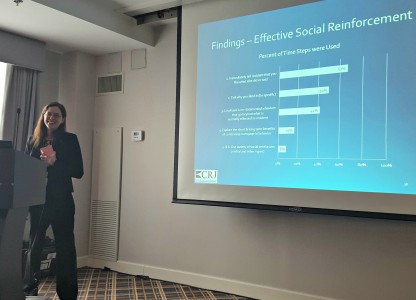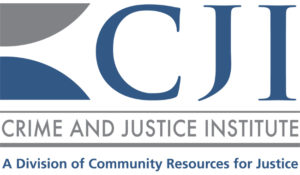
 Community corrections professionals from around the world attended presentations by CRJ’s Crime and Justice Institute and Social Justice Services staff on implementing criminal and juvenile justice reforms with fidelity at the recent International Community Corrections Association (ICCA) conference.
Community corrections professionals from around the world attended presentations by CRJ’s Crime and Justice Institute and Social Justice Services staff on implementing criminal and juvenile justice reforms with fidelity at the recent International Community Corrections Association (ICCA) conference.
CJI staff Melissa Threadgill and Tessa Upin presented a talk entitled “Turning Bold Ideas into Concrete Results: Developing the Support Structures Necessary to Successfully Implement New Criminal and Juvenile Justice Policies.” The session was designed to help state and local criminal and juvenile justice agencies assess their implementation capacity and develop the support structures – including teams, implementation and communication plans, and data collection and quality assurance systems – to ensure new policies will achieve desired results. Threadgill and Upin used illustrative examples from CJI’s work as implementation technical assistance providers in states across the country, including Mississippi, Utah, Hawaii, Kentucky, Georgia, West Virginia and South Dakota.
CJI staff Julie Finn joined CRJ’s Director of Social Justice Services Elizabeth Curtin to present “Bringing it Home: Fidelity in the Real World.” In this presentation, Finn and Curtin provided an overview of Community Resources for Justice’s “Operation Integrate” – an innovative strategy to use the expertise of two of the organizations’ divisions, Social Justice Services (SJS) and Crime and Justice Institute (CJI), to do what works and what matters to reduce the risk of CRJ clients re-offending.
In addition to the background on the development of this initiative, the presentation also discussed the results of a data-driven approach employed by CJI to better understand the use of two of the most important core correctional practice skills – developing a professional relationship/rapport with clients and the effective use of reinforcement. Implementing new programs with fidelity in the “real world” can be difficult; this presentation highlighted practices organizations can use to evaluate how well new programs are being implemented and discover areas for improvement.